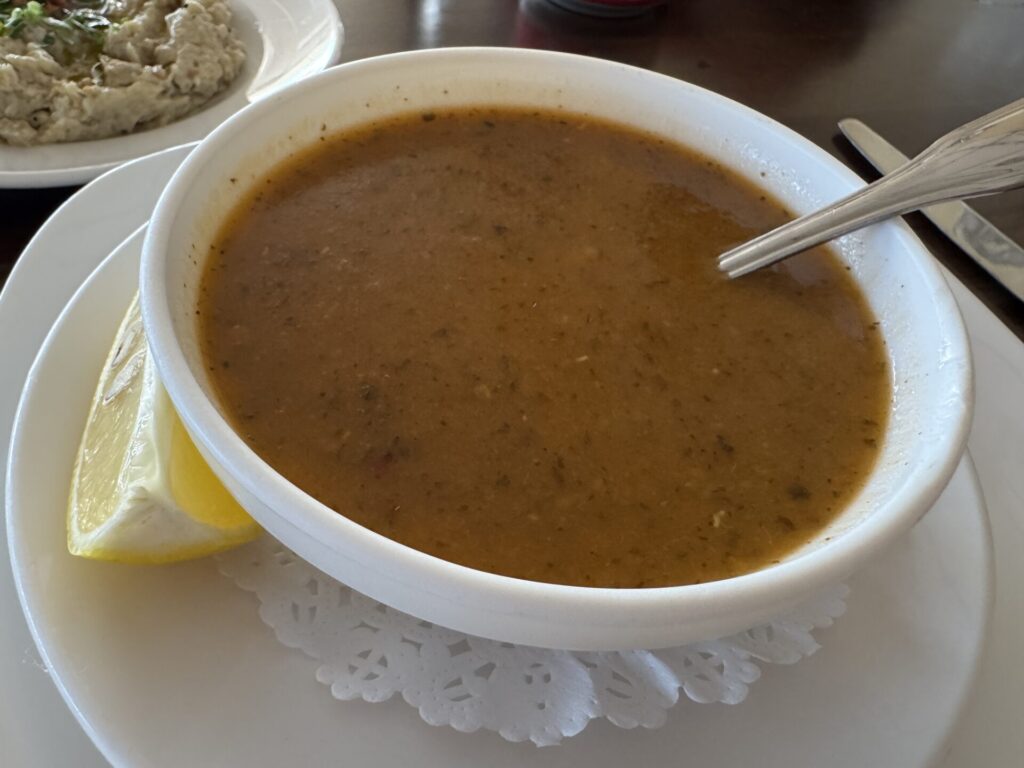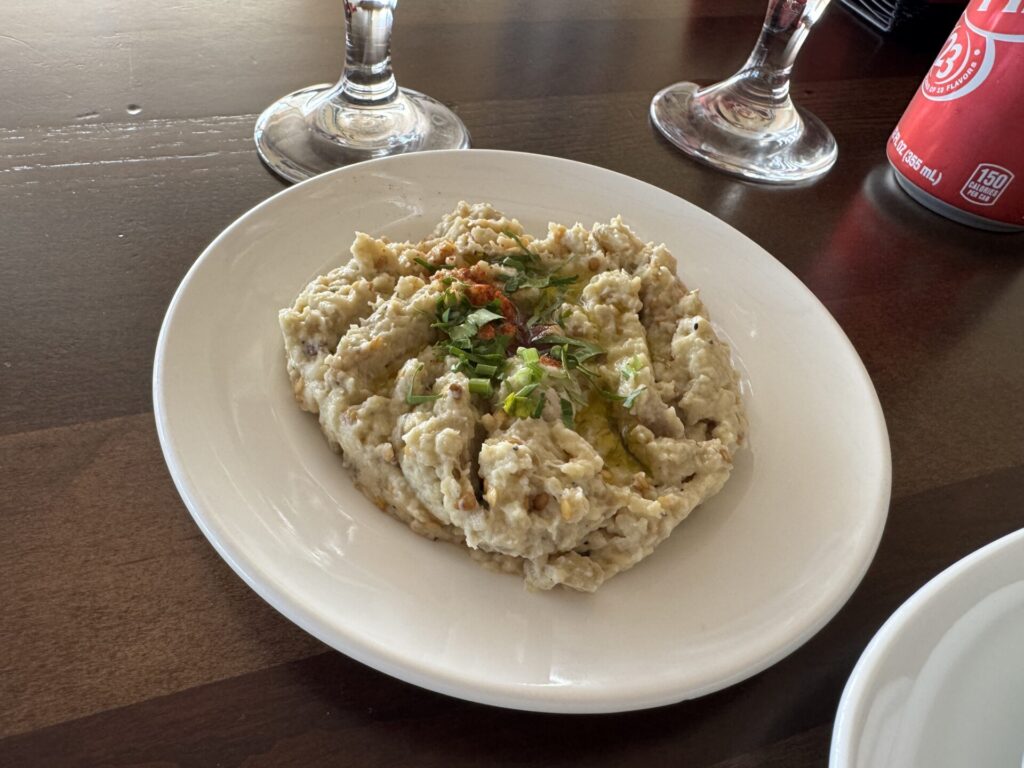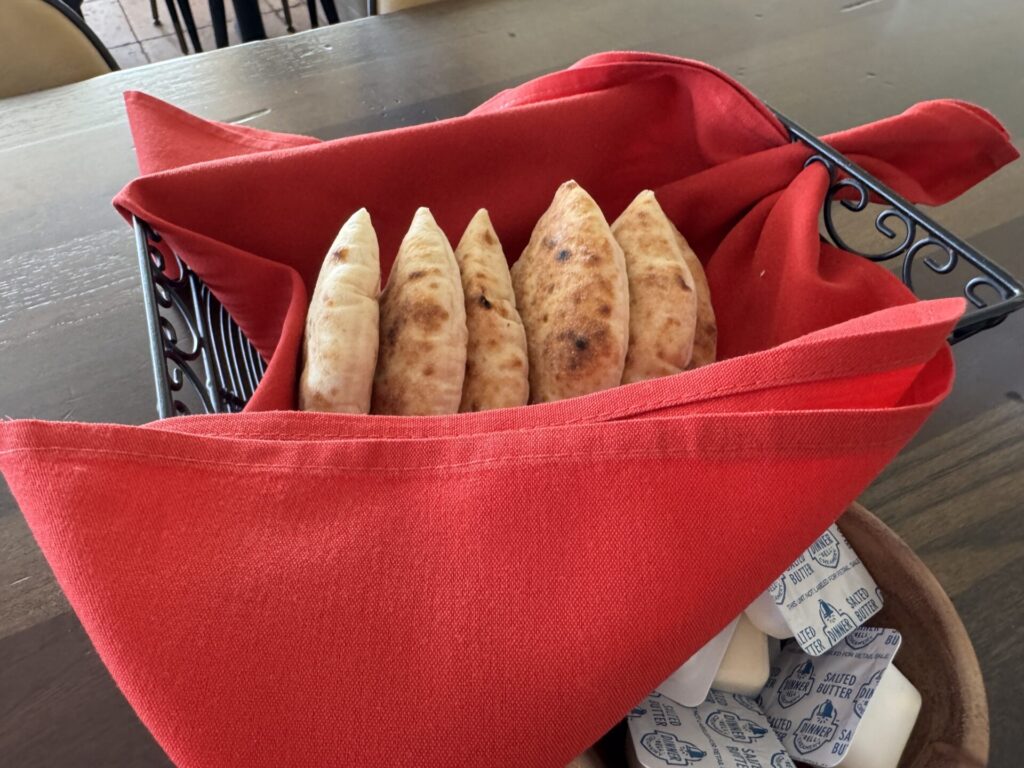- Preface
- News
- 0,000 H-1B Visa Fee: America’s New Rule Targeting Foreign Tech Workers — and What You Can Do Now to Protect Your Career
- Can Just 3 Minutes of “Red Light” Restore Your Vision? – Exploring the Link Between Aging and Mitochondria in the Latest Research
- “Illness Comes from the Mind” — Just an Old Saying? No. Science Is Beginning to Uncover the Truth Behind It
- Mars Could Get a Lot Closer: The “CNTR” Rocket Powered by a Nuclear Engine
- AI Actress Tilly Norwood Is Shaking Up the Film Industry!
- Pick-up
- Gadget/Lifehacks
- Personal Finance
- Shop/Restaurant
- Postscript
Preface
The sun has been setting earlier lately, and the weather is getting colder — how have you all been doing?
Over the past few weeks, I’ve started taking tennis lessons once a week. However, I’ve been feeling a bit frustrated because the skill levels of the members in my group are quite different from mine. Still, I’m very grateful to have an environment where I can play tennis under the guidance of a coach.
In the spring of 2024, I suffered a serious injury during a tennis match that required several stitches in my finger. Since then, my technique, strength, and stamina had dropped significantly.
In the U.S., the organization called USTA — which hosts the US Open — also holds amateur tournaments. Amateur tournaments are divided into detailed levels, and I’m rated 3.5 on the NTRP scale, though I had participated in several 4.0-level matches before my injury.
Now that I’ve regained much of my pre-injury level, I decided to enter a tournament at the end of October for the first time in a long while. It was my first tournament since the injury, so it was a bit of a challenge, but I joined the NTRP 4.0 event.
Unfortunately, I lost in the first round, but it was a valuable experience to be able to play at a higher level.
Also, registration for the team league matches begins this month, and with the coordinator’s help, I plan to participate in those as well. Last year, I tried to join the team league when my injury had somewhat healed, but I didn’t have many opportunities to play matches as I’d hoped. So this year, I’m determined to make it happen!
By the way, I received some very happy news last month, but I’ll share the details around December.
Now then, let’s move on to this month’s “Tree Topics”!
News
0,000 H-1B Visa Fee: America’s New Rule Targeting Foreign Tech Workers — and What You Can Do Now to Protect Your Career
Recently, the news surrounding the U.S. H-1B visa has been changing at a dizzying pace. A $100,000 fee!? A shift from lottery to wage-based selection!? Indian IT firms being targeted!? To be honest, with so much conflicting information flying around, it’s no wonder that ordinary workers and technical professionals feel completely lost. So in this article, I’ve organized the latest updates and summarized the key points you should know now, along with my personal thoughts on how to prepare.
Key Policy Changes to Know
The Shock of the 0,000 Fee
- A new rule has been announced imposing a $100,000 (about ¥14–16 million) fee on new H-1B visa applicants.
- This is expected to have a major impact, especially on Indian IT firms and others that rely on project-based dispatch models for U.S. clients.
- Both companies and employees are scrambling to respond to this sudden, massive added cost.
Shift from Lottery to Wage- and Skill-Based Selection
- Until now, the H-1B system was largely a random lottery, making selection a matter of luck.
- Under the new system, offered wages and applicant skills will play a key role in determining priority.
- Those who can offer or command higher salaries will have a better chance of selection, while lower-paid applicants and smaller companies will likely be disadvantaged.
Indian IT Companies in the Crosshairs
- For Indian outsourcing firms, the dispatch model has been their mainstay in the U.S.
- The steep fee threatens to squeeze their profit margins and force a rethink of their business models.
Legal and Operational Uncertainty
- The new fees and selection criteria could face legal challenges, and there’s still ambiguity around implementation, including exceptions for universities and research institutions.
Industry Reactions
Major corporations are already reviewing the visa status of their employees and rushing to prepare for renewals and travel. Some reports suggest that the new $100,000 fee will apply only to new applications, but given how fluid the policy is, confusion is likely to continue. Tech professionals themselves now need to double-check their travel and contract conditions carefully.
Points I’m Personally Watching
- Capital Strength and Inequality – The high fees and wage-based selection favor well-funded companies and individuals, potentially widening the gap with smaller firms and less affluent workers.
- A Change in the Nature of the System – Moving from a lottery to a merit-based system could alter global talent flows and corporate strategies in significant ways.
- Greater Difficulty in Building an Overseas Career – With fewer options available, risk management and advance preparation will become more critical than ever.
What You Can Do Now to Protect Your Career
Whether you’re an employer or an H-1B visa holder, here are practical steps to consider:
- Plan wage and compensation packages carefully – Since offered salary directly affects selection odds under the new system, plan with enough cushion.
- Review visa and contract terms – Check validity periods, renewal conditions, and possible exemptions.
- Stay informed – Keep track of government announcements, lawsuits, and company responses.
- Prepare alternative plans – Consider options such as employment outside the U.S., remote work, or exploring other countries’ visa programs.
In Summary
The U.S. H-1B visa program has a direct impact on global labor markets, business strategies, and individual career paths.
The proposed $100,000 fee and shift toward wage-based selection will bring major changes for both employers and foreign professionals hoping to work in the U.S.
As someone currently working in the U.S. on an H-1B visa and awaiting green card approval, my takeaway is this: “Those who spot the waves of change early and prepare will be the ones who survive.”
For anyone aiming to work in America, now is the time to stay alert, stay flexible, and stay ready.
Can Just 3 Minutes of “Red Light” Restore Your Vision? – Exploring the Link Between Aging and Mitochondria in the Latest Research
“Colors seem dull lately.”
“My eyes get tired easily in the evening.”
Have you ever felt that way? It might actually be related to a lack of energy in the cells of your eyes. A research team at University College London (UCL) has announced astonishing results: Simply looking at red light (670 nanometers) for just three minutes can temporarily improve age-related decline in color vision. The study was published in Scientific Reports (a Nature journal) in 2021.
Aging Eyes and “Tired” Mitochondria
In the retina of our eyes are cone cells, which detect light and distinguish colors such as red, green, and blue. However, these cone cells require a large amount of energy to function. As we age, their mitochondria — the cell’s power plants — become fatigued. As a result, the amount of energy molecules decreases, leading to reduced visual performance — especially in the ability to perceive color contrast.
Can Red Light “Recharge” the Mitochondria?
The UCL research team had previously confirmed through animal studies that long-wavelength light (red to near-infrared) can enhance mitochondrial function.
This time, they tested two key questions:
- Can a single exposure to red light improve human vision?
- How long does the effect last?
The Experiment
Participants: 34–70-year-old healthy men and women
Method: Red light (670 nm) exposure to one eye for 3 minutes
Timing: Morning (8–9 a.m.) or midday (12–1 p.m.)
Results — Morning Exposure Improved Vision!
Surprisingly, participants who viewed the red light in the morning showed a clear improvement in “color contrast sensitivity” three hours later.
- 🔵 Blue–yellow (tritan axis): about 17% improvement
- 🔴 Red–green (protan axis): about 12% improvement
For some participants, the effect even lasted up to a week.
Meanwhile, those exposed at midday showed no noticeable effect.
In other words, morning exposure appears to be the key.
Why Does Timing Matter?
According to the researchers, mitochondrial activity follows a daily rhythm, changing throughout the day. In the morning, mitochondria are in a “light-sensitive mode”, making it easier to support energy metabolism. By the afternoon, their responsiveness declines — meaning the same light exposure produces much weaker effects.
“Illness Comes from the Mind” — Just an Old Saying? No. Science Is Beginning to Uncover the Truth Behind It
When you feel unwell, have you ever thought, “Maybe it’s stress…” or “It’s probably just my mindset”? For generations, people have said that “illness comes from the mind.”
But recent studies suggest that the brain might actually be able to recreate inflammation in the body — purely from memory. A research team led by the Technion – Israel Institute of Technology conducted an experiment with mice and discovered that the brain stores a “memory” of illness in specific circuits. When those circuits were reactivated later, the same parts of the body developed inflammation again — even without any new physical cause.
A Brain That “Remembers” Illness? What Does That Mean?
Here’s how the experiment worked:
- Inducing illness:
Mice were given drugs that caused colitis or peritonitis (inflammation of the colon or abdominal cavity). - Healing the inflammation:
The mice were then treated or allowed to recover naturally until the inflammation subsided. - Identifying the brain circuits:
During the inflammation phase, researchers observed that specific regions of the brain became active depending on which body part was inflamed. - Reactivating the circuit:
Later, even after the inflammation had healed, when researchers artificially reactivated those same brain circuits with chemicals, the mice once again developed inflammation in the exact same body parts—despite there being no infection or injury.
In other words, by turning back on the neural network that was active during illness, the body physically “relived” that inflammation.
This phenomenon — the “memory of disease” — was observed directly in mice.
How Much Truth Is There to “The Mind Causes Illness”?
From this discovery, scientists have proposed a new hypothesis:
- The brain stores “maps” of body regions and their corresponding inflammation patterns.
- When certain stressors or psychological triggers occur, those circuits may be reactivated, causing sensations of pain or discomfort in the same area.
- This could mean that conditions such as allergies, autoimmune diseases, or irritable bowel syndrome (IBS) — long considered “mystery inflammations” — might, at least in part, be influenced by the brain’s stored memory of past illness.
Of course, this research is still in the animal testing stage, and it’s not yet clear whether the same process occurs in humans. But if it turns out to be true, it could become a breakthrough in understanding the mind-body connection, transforming the way we approach psychosomatic medicine, psychiatry, and chronic illness.
My Thoughts After Reading This
What struck me most about this study is the idea that memory itself — not just thoughts or emotions — might act as both a brake and a switch for physical health.
For example, after recovering from a bad cold, perhaps the brain still remembers that discomfort and becomes hyper-alert: “What if it happens again?” That cautious response could, in theory, prime the body to recreate inflammation as a form of self-protection — or overreaction.
In a sense, the brain could be keeping the body in a “high-alert mode”, ready to relive an illness even without any physical cause.
Of course, in humans, things are much more complex — emotions, social factors, and environment all play a role…
Mars Could Get a Lot Closer: The “CNTR” Rocket Powered by a Nuclear Engine
A new type of rocket — the Centrifugal Nuclear Thermal Rocket (CNTR) — currently being co-developed by NASA and Ohio State University, could dramatically shorten the travel time for round trips to Mars.
What Is CNTR?
CNTR is a new rocket concept that uses a nuclear reactor with liquid uranium fuel to heat the rocket’s propellant, generating highly efficient thrust.
One of the most remarkable features of this technology is its flexibility in fuel use: it can utilize various propellants found in space — such as ammonia, methane, propane, and hydrazine — rather than relying on a single type.
Shorter Travel Times
Currently, rockets using traditional chemical propulsion require about one year for a one-way trip to Mars. With CNTR technology, that travel time could be cut in half — just six months one way, enabling a round trip in about one year.
This advancement could make Mars exploration and manned missions far more feasible than ever before.
Challenges and Outlook
Of course, CNTR is still in the conceptual stage, and several challenges remain — particularly in ensuring safety and achieving a stable reactor system.
However, the research team at Ohio State University believes that with key technical hurdles overcome, practical implementation may not be far off.
If breakthroughs continue, the day may come when Mars truly feels within reach.
Expectations are rising for what this technology could mean for the future of space exploration.
AI Actress Tilly Norwood Is Shaking Up the Film Industry!
Let’s take a closer look at the much-talked-about AI actress, Tilly Norwood.
Who Is Tilly Norwood?
Tilly Norwood is a completely AI-generated virtual actress, created by Xicoia, the AI talent studio operated by Particle6, an AI production company founded by Eline van der Velden, a Dutch actress and producer.
She made her debut in the comedy short film “AI Commissioner,” which premiered on YouTube on July 30, 2025. The film was produced using various AI tools, and Tilly played one of the leading roles.
Active on Social Media
Tilly interacts with fans through Instagram (@tillynorwood), where she posts about her daily life and fashion. Her profile clearly states, “I am a creation,” openly acknowledging her identity as an AI being.
Impact on the Film Industry
Tilly’s arrival has caused a major stir in the film industry. Eline van der Velden, her creator, has expressed her ambition to develop Tilly into the next Scarlett Johansson or Natalie Portman. Several talent agencies are reportedly considering signing her, and the industry is watching closely to see what happens next.
However, not everyone is celebrating. Some real-life actors have voiced concern that the rise of AI actresses like Tilly could threaten their livelihoods. This controversy has sparked new discussions about the coexistence of AI and human performers.
Conclusion
The emergence of Tilly Norwood is a striking example of how AI technology is transforming the entertainment world. It raises big questions about creativity, authenticity, and the future of performance itself. It’s both a little unsettling and deeply fascinating to imagine how AI and humans might share the screen in the years to come.
Pick-up
The Untold Story of the Nobel Prize: A Global Honor Born from a Mistaken Report
Today, I’d like to share a surprising story behind the creation of the Nobel Prize—one of the most prestigious awards in the world.
A Mistaken News Report?
The founder of the Nobel Prize, Alfred Nobel, is best known for inventing dynamite. However, no one at the time could have imagined that his name would one day be associated with one of humanity’s greatest honors. Interestingly, the birth of the Nobel Prize was triggered by a false news report. When Alfred’s brother passed away, a French newspaper mistakenly published an obituary for Alfred himself. The article condemned him as a “merchant of death” for profiting from weapons and explosives. Deeply affected by this misreporting, Nobel began to reflect on how he would be remembered after his death. It is said that this moment inspired him to devote his fortune to establishing a prize that would recognize those who contributed to the betterment of humanity.
The Creation of the Nobel Prize
In his will, Nobel specified that his estate should be used to create awards honoring individuals who had made the greatest contributions to humanity. This became the foundation of today’s Nobel Prizes. The first Nobel Prizes were awarded in 1901, and since then, countless scientists, writers, and activists around the world have received this distinguished recognition for their work.
Conclusion
The story of the Nobel Prize reminds us that even an unexpected or unfortunate event—like a mistaken obituary—can become the catalyst for something profoundly good. If not for that false report, the Nobel Prize might never have existed. Life is full of unpredictable moments, and sometimes, those very twists of fate can change the world for the better.
Gadget/Lifehacks
I will be taking a break this month.
Personal Finance
Japan has seen its first-ever female prime minister, and the Japanese market seems to be performing well. However, I continue to invest in U.S. stocks. My performance since the last update is as follows:
- KNSA: 8.72%
- STRL: 7.57%
- SEI: 8.62%, 3.96%
- BE: 0.42%
- CMCL: 7.62%
- PTCT: 3.92%, 2.06%
- NEM: (15.39)%
- AEIS: 3.69%, 5.80%
- APH: 0.73%
- CIEN: 3.36%, (4.80)%
- AORT: (3.53)%
Since the beginning of November, the U.S. market has deteriorated, and I’ve taken a bit of a hit. My current goal is to achieve gains of 3–5% at least twice a week. Recently, the value of gold has been rising, which has led to strong performance in related industries such as mining companies. However, due to significant volatility, the results have been fairly moderate.
Given the recent market downturn, I currently do not hold any positions. I expect to remain in cash until the market recovers.”**
Shop/Restaurant
Fasil Mediterranean Restaurant
I recently had a craving for Mediterranean food and found this restaurant nearby. While Mediterranean cuisine can be quite similar across the board, this place mainly serves Turkish dishes. The service was very friendly, and everything we ordered was delicious — including the Turkish coffee to finish the meal!






Fasil Mediterranean Restaurant
308 Wootton St Ste 1, Boonton, NJ 07005
Mon 11:00 AM – 10:00 PM
Tue Closed
Wed-Thu 11:00 AM – 10:00 PM
Fri-Sat 11:00 AM – 11:00 PM
Sun 12:00 PM – 10:00 PM
Postscript
I had originally planned to post this in October, but with my family falling ill and my personal life being quite hectic, the post ended up being delayed until November. I’ll do my best to make sure I can post regularly in December!


コメント